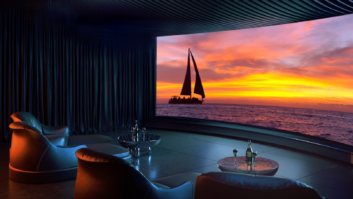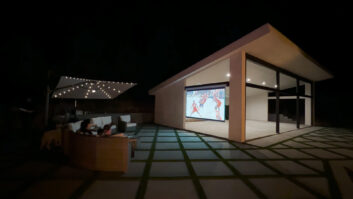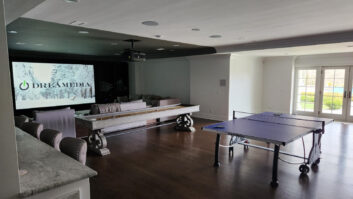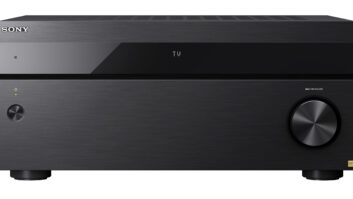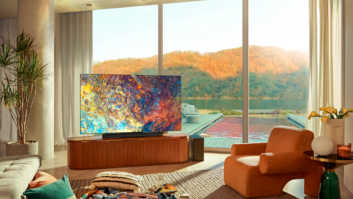Hiding One of the Most Conspicuous Components in the Theater
The home theater projector is one of the most difficult components to integrate into a private theater room design. Fortunately savvy home theater designers can overcome most of these design hurdles with proper creativity and engineering. Here are six challenges that I’ve observed, and how to overcome them.

Sam Cavitt (samcavittmedesign.tv) is president of Paradise Theater in Kihei, Hawaii, and Carlsbad, California.
Positioning Video projectors of all types have positioning constraints. Today’s single-lens projectors with zoom and optical adjustments offer a lot of flexibility, but there are limits. Once a screen size and aspect ratio has been finalized, the designer must choose a throw distance that is compatible with one of the projector’s lens options and then must find a vertical position that is compatible with its specification and the selected lens and is acceptable with the room design. Sounds easy, right? It would be if we have a single-row theater with the ability to position the projector outside the room. Probably the most difficult balance is between vertical viewing angles, clear sight lines, and projector offset parameters.
Noise
To date, all projectors that are capable of driving the screen sizes found in most private theaters generate higher fan noise than is acceptable. This is because the well-engineered theater will have a very low noise floor to help audience members enjoy the sonic details of a high-quality audio system. Therefore the projector must be housed in an enclosure or room that is acoustically separate from the space. If the positioning and layout of the room support a projection room outside the theater, the job is simplified, requiring only that the wall between projection room and theater and the projection window mitigate the noise. If the projector is going to remain inside the theater, however, an isolation housing must be designed that is adequate to fit the projector, mounting hardware, wiring, connections, ventilation, and in many cases motorized lens assemblies.
Heat
The problem looks like this: need to access the required volume of fresh air from a source isolated from the theater, guide that air to the intake port(s) on the projector, draw the air out of the exhaust port of the projector, and exhaust the air out of the enclosure and to an outlet space that is isolated from the theater and is separate from the supply air space. The most difficult (and often missed) component of this process is the directing of the ventilation air through the projector chassis.

A well-engineered theater needs to have a very low noise floor to help audience members enjoy the sonic details of a high-quality audio system. Therefore the projector must be housed in an enclosure or room that is acoustically separate from the space.
Size
Projectors that drive large screens are big and heavy. This means the housing also has to be large and will add even more weight to the overall assembly. Another factor of the size is the weight of both the projector and housing. Make sure the mounting brackets and assemblies designed are rated to carry the combined loads of the projector, all associated hardware, and the enclosure itself.
Serviceability
Projectors have connections, controls, lamp replacement doors, lens adjustments, etc. that will require accessibility. Ideally the enclosure would be fully removable to provide full access. There are pre-designed solutions available, but these generally require space in addition to the minimum requirements. Some solutions are available commercially that enable a projector to be positioned for service and then repositioned for operation. When specifying such a device, take care to engineer the spatial requirements and provide service loops for ventilation and connections.
Aesthetics
In short, the designer’s task is to create a housing that accommodates the size and weight of a large projector and its associated hardware, provides the ventilation needed by the projector, isolates the noise generated by the projector, allows adequate access for service, is positioned correctly for the projectors optimum performance, and make it all look good.
